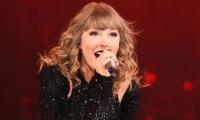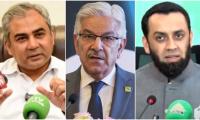In Pakistan, articles and essays about India that appear in journals and newspapers mostly paddle a hackneyed narrative that the state sponsors. There is hardly any serious attempt to understand the post-independent history of India that has resulted in the recent surge in Hindutva in a country that claims to be the largest democracy in the world.
I had been meaning to write a couple of columns after the death of Mulayam Singh Yadav – a three-time chief minister of Uttar Pradesh (UP) who died in October 2022 aged 83. He was a giant of Indian politics, especially in UP which is the largest state of India with a population nearly as big as that of Pakistan. UP plays a significant role in Indian politics and without having insight into this state and its political developments one can hardly fathom today’s India. This series of columns will cover 75 years of Indian political history.
This first column deals with the first 10 years of the Nehru era from 1947 to 1957. After independence, the Indian National Congress led by Jawaharlal Nehru – from Allahabad in UP – faced multiple economic and political challenges; in a way both were intertwined. On the economic front, Nehru was a left-leaning politician who believed in active control by the state. He was sort of a socialist and clearly a secular leader who became a target of extreme leftist and ultra-rightist forces in India. He had a soft corner for the Soviet Union in international politics and managed to keep a balance in a bipolar world.
After the creation of Pakistan, there were some far-right elements in India that wanted a Hindu republic too. Their stance was that, since Muslims in India did not want to live with Hindus and created a separate homeland for themselves as an Islamic republic, Hindus of India had every right to establish a Hindu state.
Nehru included in his post-independent cabinet two Muslims: Minister of Education Maulana Azad and of communication Rafi Kidwai. A Christian John Matthai had two portfolios for railway and finance, also becoming the first chairman of the State Bank of India. A Dalit – considered untouchable by many Hindus – took up the law ministry, and two Sikhs – Baldev Singh and Amrit Kaur – became ministers of defence and health respectively. C H Bhaba, a Zoroastrian took office as the minister for commerce. All this was not palatable to extremist Hindus, so the first opposition that Nehru faced was from Hindu nationalists.
One extremist – Nathuram Godse – had also killed Mahatma Gandhi for being sympathetic to Muslims. The second major opposition was from the Communist Party of India (CPI). The CPI followed a hardline after the second party congress in February 1948 when B T Ranadive became general secretary of the party replacing P C Joshi. The CPI adopted a militant policy that resulted in various uprisings across India including a major one in Telangana. This prompted a crackdown by the Nehru government on the communists in India. While Hindu nationalists opposed Nehru for not being sufficiently Hindu, communists did not like Nehru for lacking in his socialist credentials.
A third strand of opposition came from within the Congress party in which there were divergent views on how to run the economy and politics of the country. Mahatma Gandhi had managed to keep this diversity within the Congress fold; after his death the party fabric started to fray. The Nehru family was Kashmiri by origin but lived in Allahabad, UP. His home minister was Vallabhbhai Patel a Gujarati, 14 years his senior: Nehru was 58 and Patel 72. At independence, Patel was a strong candidate to be prime minister but Gandhi – the supreme leader of Congress – selected Nehru to lead the nation.
At that time, Congress was an amalgamation of those who pretended to be more socialist than Nehru – such as Jayaprakash Narayan – and those who claimed to be more Hindu such as P D Tandon. In 1948, Jayaprakash Narayan with most of the Congress socialists left the party and a couple of years later formed the Praja Socialist Party. In 1950, a couple of significant developments took place: the Constitution of India came into force, and Maulana Azad inaugurated the first Indian Institute of Technology (IIT) at Kharagpur. It paved the way for many more IITs across India and played a significant role in India’s future technological progress.
The CPI rejected the new constitution of India and now there was an open conflict between the communists and the Congress. Soon – perhaps at the advice of the Soviet Communist Party – the CPI deposed BT Ranadive after declaring him an adventurist, and altered his revolutionary politics. The party changed its aggressive policy towards Congress, while Nehru faced more challenges from within his party. Acharya Kripalani – a migrant form Hyderabad Sindh – demanded that the party’s views should be paramount in all decisions but Nehru and Patel (PM and deputy PM) were more in favour of the government making decisions about day-to-day affairs.
They restricted the Congress to lay down broad principles only. Despite their differences, Nehru supported Kripalani in the election of the Congress president in 1950 while Patel supported P D Tandon who was a ‘soft’ Hindu nationalist from UP; he defeated Kripalani. This prompted Kripalani to leave Congress and become one of the founders of the Kisan Mazdoor Praja Party (KMPP). The KMPP later on merged with the Socialist Party of India to form Praja Socialist Party. Tandon also developed differences with Nehru and resigned from the Congress presidency in the run-up to the general elections in 1951 - 52.
The 75-year old deputy PM and home minister V B Patel died in 1950. Nehru replaced him with a Madrasi, Rajagopalachari, who could serve as the home minister for less than a year. The first general elections took place in India from Oct 1951 to Feb 1952 in which Congress needed 245 seats to form the government, it won 364 and the CPI emerged as the second largest party with 16 seats. Jayaprakash Narayan’s Socialist Party won just 12 seats in 1952 elections. Now Nehru faced another challenge from his new home minister Rajagopalachari who developed differences on how to treat communists and Hindu extremists. Rajagopalachari was a staunch anti-communist, while Nehru considered the Hindu Mahasabha that Savarkar was leading as a greater threat.
Rajagopalachari was also not in favour of the States Reorganization Commission that Justice Fazl Ali was leading and had full support from home minister Govind Ballabh Pant from 1955 onwards. Pant remained the chief minister of UP from 1946 to 1954. In 1956, Nehru initiated major reform by enforcing the States Reorganization Act that changed the boundaries of India’s states and territories by organizing them along linguistic lines. Now there were 14 states and six Union Territories. Since 1956, the number of states in India has doubled to 28 in 2022.
Thanks to all this, the 1957 general elections brought Congress back to power with seven more seats with a tally of 371 from 364 in 1952. The CPI also increased its seats to 27 (nine of them from Kerala alone); while the third largest party was still Jayaprakash Narayan’s Praja Socialist Party with 19 seats. The Kerala legislative assembly elections of 1957 brought the first communist government to power in an Indian state, with Namboodiripad as the chief minister. A year earlier, Kerala state had come into being after the merger of Travancore-Cochin with the Malabar district.
To be continued
The writer holds a PhD from the University of Birmingham, UK. He tweets @NaazirMahmood and can be reached at: mnazir1964@yahoo.co.uk
Economic nationalism remains potent political narrative, influencing both Republican and Democratic platforms
Yes, blockchain, decentralised and distributed ledger technology, is foundational backbone of cryptocurrencies
Blue carbon covers merely 2% of ocean surface but absorbs 50% of carbon dioxide
During WWII, Japan’s economy and national morale were plummeted by its doomed alliance with Germany
One can imagine how confusion will affect psyche of not just observers but also of participants of various ongoing...
After November 30, it will be impossible for ordinary internet users to access all banned websites, including X







